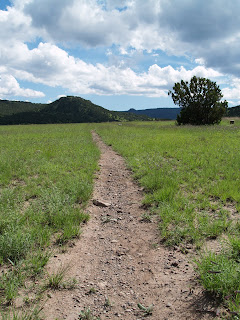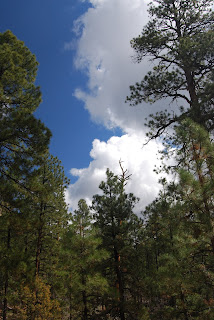



 HACKBERRY SPRING
Superstition Wilderness
HACKBERRY SPRING
Superstition Wilderness
Although there’s no “official” trail leading to Hackberry Spring, intrepid hikers with a good pair of boots will have no trouble locating this favorite hideaway in the Superstition Mountains. The hike begins on an old dirt road that meanders through an abandoned corral and windmill site before dropping down into the bed of First Water Creek. From there, the route weaves among boulders, tiny stands of trees, and reeds full of vociferous, bright red cardinals. Water is sporadic in the canyon, so some creek hopping may be necessary. Evidence of the area’s volcanic origins as well as the landscape-shaping effects of running water is showcased in soaring canyon walls, shallow caves scoured out of lava rock and pot-hole-shaped water tanks. The most scenic part of the hike passes through a slot canyon where shallow water-carved caves make for fun exploratory side trips. The spring itself is just a rusty pipe that funnels cool water into a quiet pool surrounded by Fremont cottonwoods and, of course, hackberry shrubs. Nearby there’s a sandy “beach” with lots of shade and great views as well as many paths-of-use that lead to many points of interest along First Water Creek.
Length: 3 miles round-trip
Rating: moderate, some route-finding skills are required.
Elevation: 1,900 – 2,450 feet
Getting there:
From Phoenix, take Highway 60 east to the Idaho Road exit (Highway 88). Go left and continue on Highway 88 (follow the signs leading to Lost Dutchman State Park) to just past the park entrance (between mileposts 201 and 202) and turn right onto First Water Road (Forest Road 78). Follow FR78 for just over 2 miles to the horse parking lot (NOT the First Water trailhead) on the left and park there. From the lot, hike up FR78 for one-tenth-of-a-mile to an unmarked dirt road on the left where there’s a closed gate.
Hike directions:
Pass through the gate (which is sometimes locked but the area is still open to hikers). Continue down into First Water Canyon and the corral area. From the corral, hike east (straight ahead) along the informal paths that lead to First Water Creek. From the point where the path intersects a bare-rock slot canyon, head north (left) and hike in the creek bed through the canyon. Hackberry Spring is located roughly 1.1 mile from the gate. Return the way you came.
Information:
fs.fed.us/r3/tonto/recreation/rec-hiking-index.shtml#superstition or call (480) 610-3300



 FOREST ROAD 48
Tonto National Forest
There's really no plan here....just use the road as your arterial route and indulge your inner wild.
LENGTH: 5+ miles roundtrip (optional exploratory)
RATING: moderate (route-finding skills are required)
ELEVATION GAIN: 200 - 800 feet depending on your mood
FEE: There’s a $3 per person entry fee. The self-pay station requires exact change.
GETTING THERE:
To reach the Spur Cross trailhead, From Loop 101, exit at Cave Creek Road and drive north for approximately 15 miles to Spur Cross Ranch Road. Continue north for 4.2 miles to the parking lot on the left. The last mile of the road is good dirt and passable by sedan.
HIKE DIRECTIONS: From the Spur Cross Conservation Area trailhead, follow the Spur Cross Trail north for roughly 2 miles to the Skull Mesa trailhead. From there, continue north on FR 48, tread lightly and explore at will.
INFORMATION: Maricopa.gov/parks/spur_cross or (480) 488-6601
FOREST ROAD 48
Tonto National Forest
There's really no plan here....just use the road as your arterial route and indulge your inner wild.
LENGTH: 5+ miles roundtrip (optional exploratory)
RATING: moderate (route-finding skills are required)
ELEVATION GAIN: 200 - 800 feet depending on your mood
FEE: There’s a $3 per person entry fee. The self-pay station requires exact change.
GETTING THERE:
To reach the Spur Cross trailhead, From Loop 101, exit at Cave Creek Road and drive north for approximately 15 miles to Spur Cross Ranch Road. Continue north for 4.2 miles to the parking lot on the left. The last mile of the road is good dirt and passable by sedan.
HIKE DIRECTIONS: From the Spur Cross Conservation Area trailhead, follow the Spur Cross Trail north for roughly 2 miles to the Skull Mesa trailhead. From there, continue north on FR 48, tread lightly and explore at will.
INFORMATION: Maricopa.gov/parks/spur_cross or (480) 488-6601





































